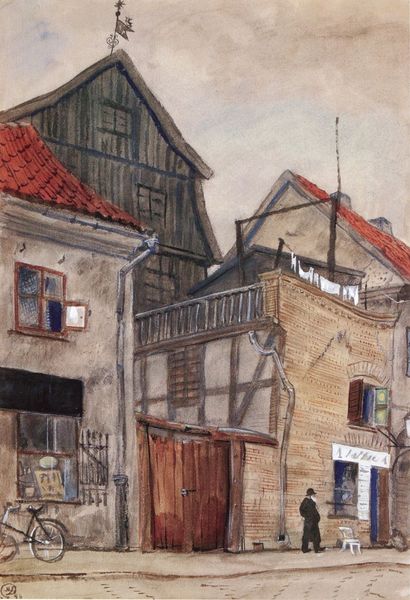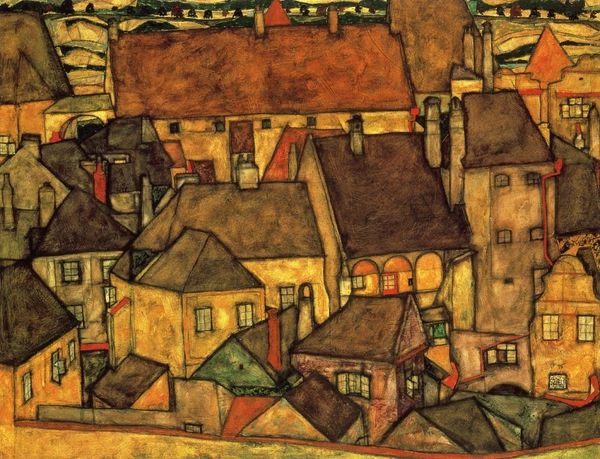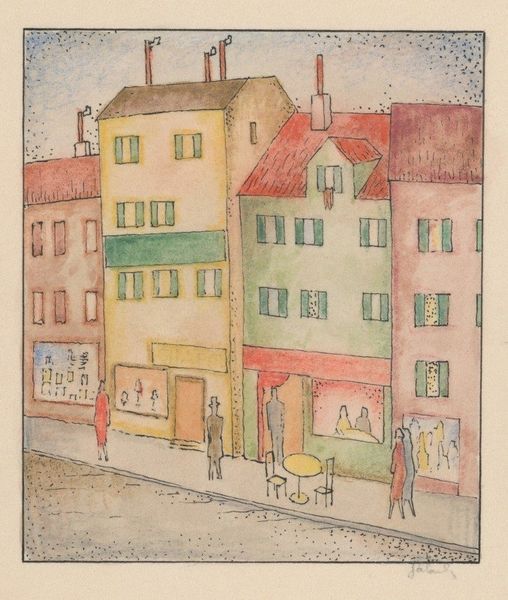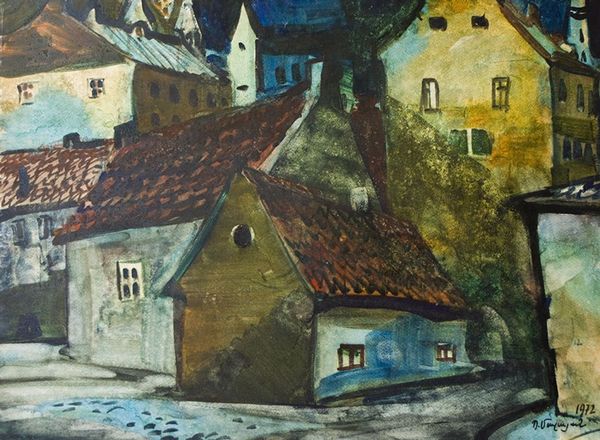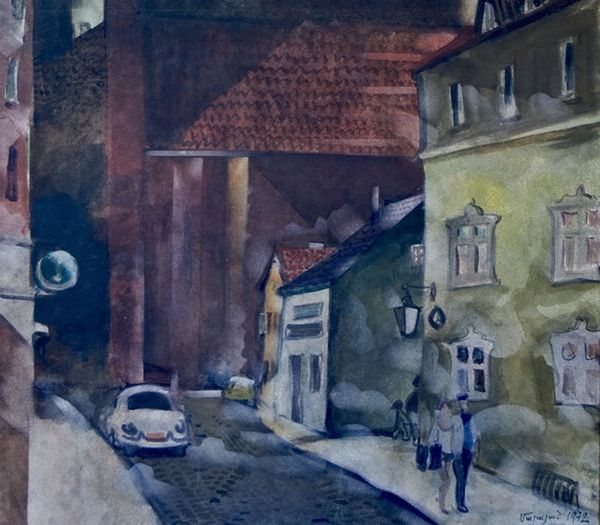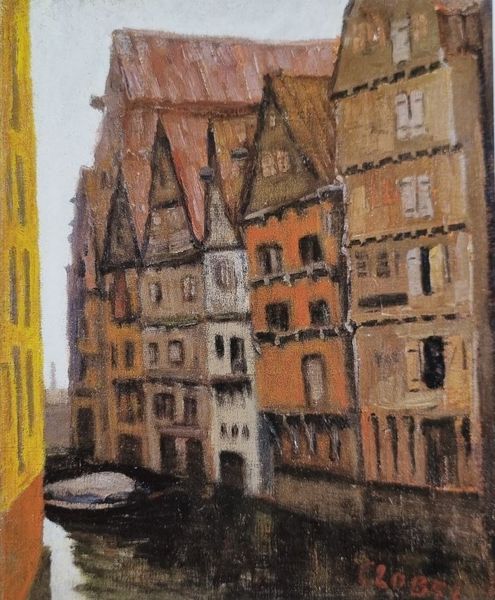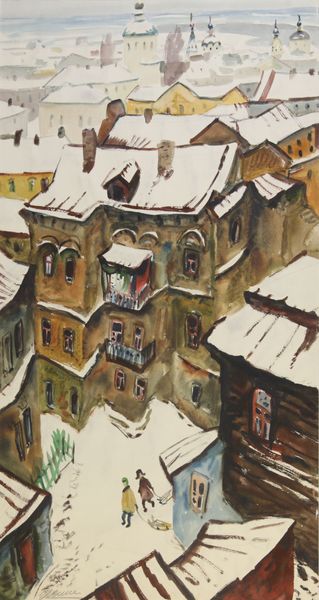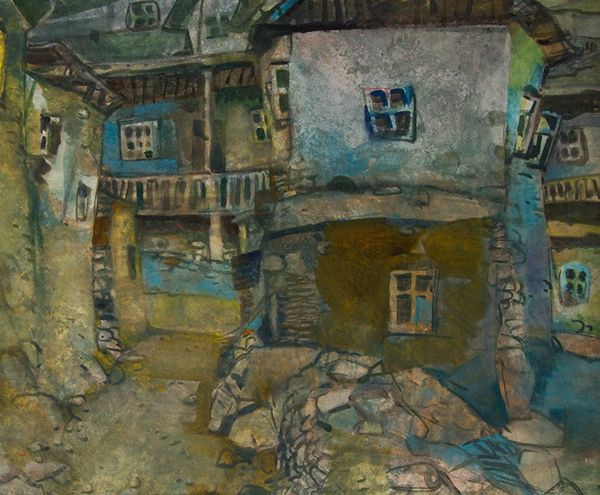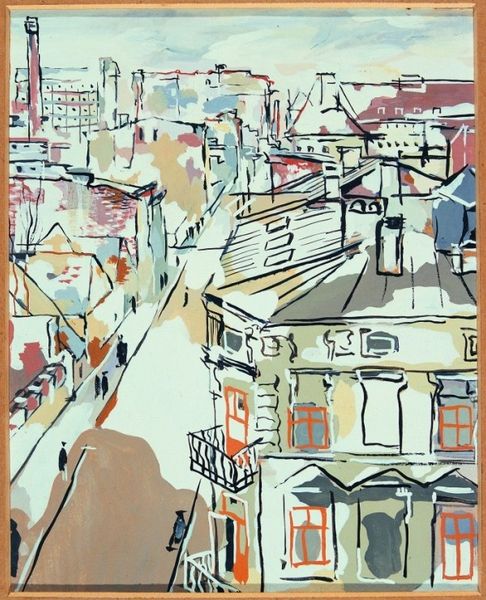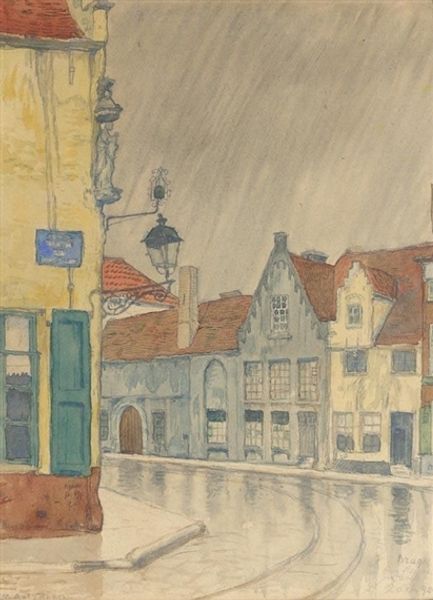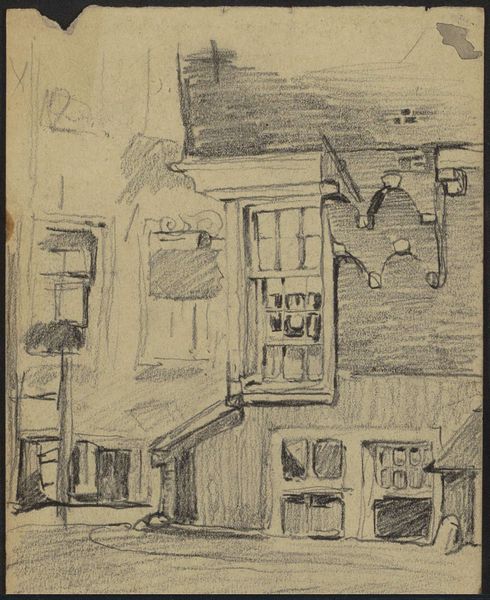
painting, watercolor
#
painting
#
watercolor
#
coloured pencil
#
expressionism
#
cityscape
#
street
#
watercolor
#
realism
Dimensions: 31 x 23.5 cm
Copyright: Mstislav Dobuzhinsky,Fair Use
Editor: Here we have Mstislav Dobuzhinsky's "A Street Scene from Riga," a watercolor from 1925. The color palette feels very muted and melancholic, like faded memories of a forgotten place. What strikes you most about it? Curator: I’m drawn to the overt materiality. Note the build-up of the watercolor washes and pencil marks. It's not just representing Riga, it's _presenting_ itself as a crafted object, a material artifact reflecting a specific moment of production. What kind of labor went into making the paper? How did the artist acquire these pigments? These questions pull me away from pure representation. Editor: I hadn't considered that. I was focused on the city as the subject, and missed the...almost grubby quality of the art making. Does that materiality have a commentary here, do you think? Curator: Precisely. It resists any romantic view. We're forced to confront the reality of artistic production and the social conditions underpinning it. Look at the buildings – not grand monuments, but structures showing age, signs of wear and use, like the layered washes of paint on textured paper. This suggests an intimacy with the lived experience, even the hardships, of city dwellers. Editor: So, by focusing on the physical qualities, you're suggesting Dobuzhinsky isn't just painting a pretty picture? Curator: Absolutely. The 'grubbiness,' as you call it, points towards an honest representation rooted in materiality. These details reveal more about Dobuzhinsky's values – how he perceives labor, material, and consumption as integral to artistic expression. Do you agree? Editor: I think so. It’s a grittier perspective on a city scene than I initially thought, thanks to how you focused on the materials themselves. Curator: Exactly. By acknowledging the processes and substances, we challenge this separation and gain a deeper appreciation of its cultural significance. I find that insightful.
Comments
No comments
Be the first to comment and join the conversation on the ultimate creative platform.
